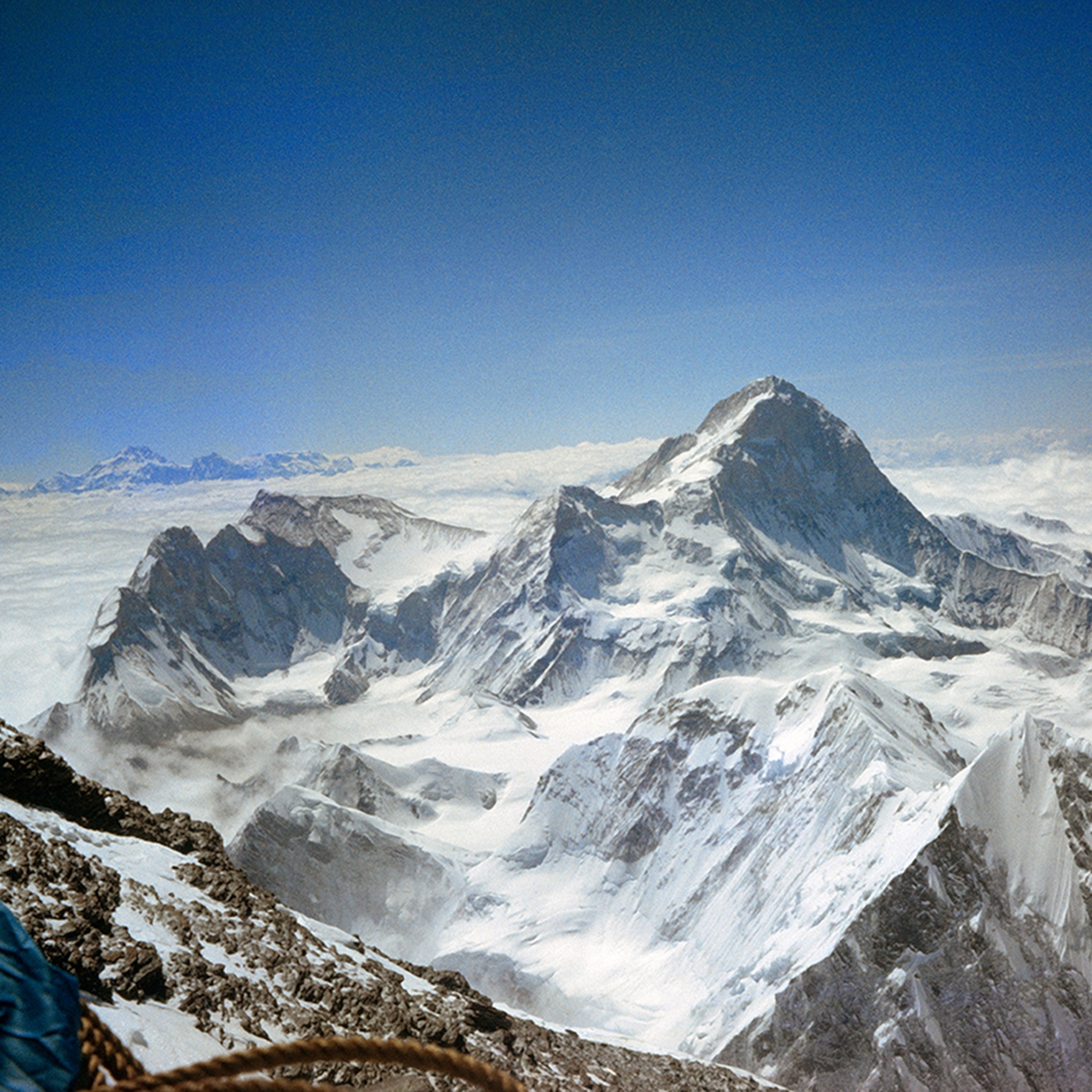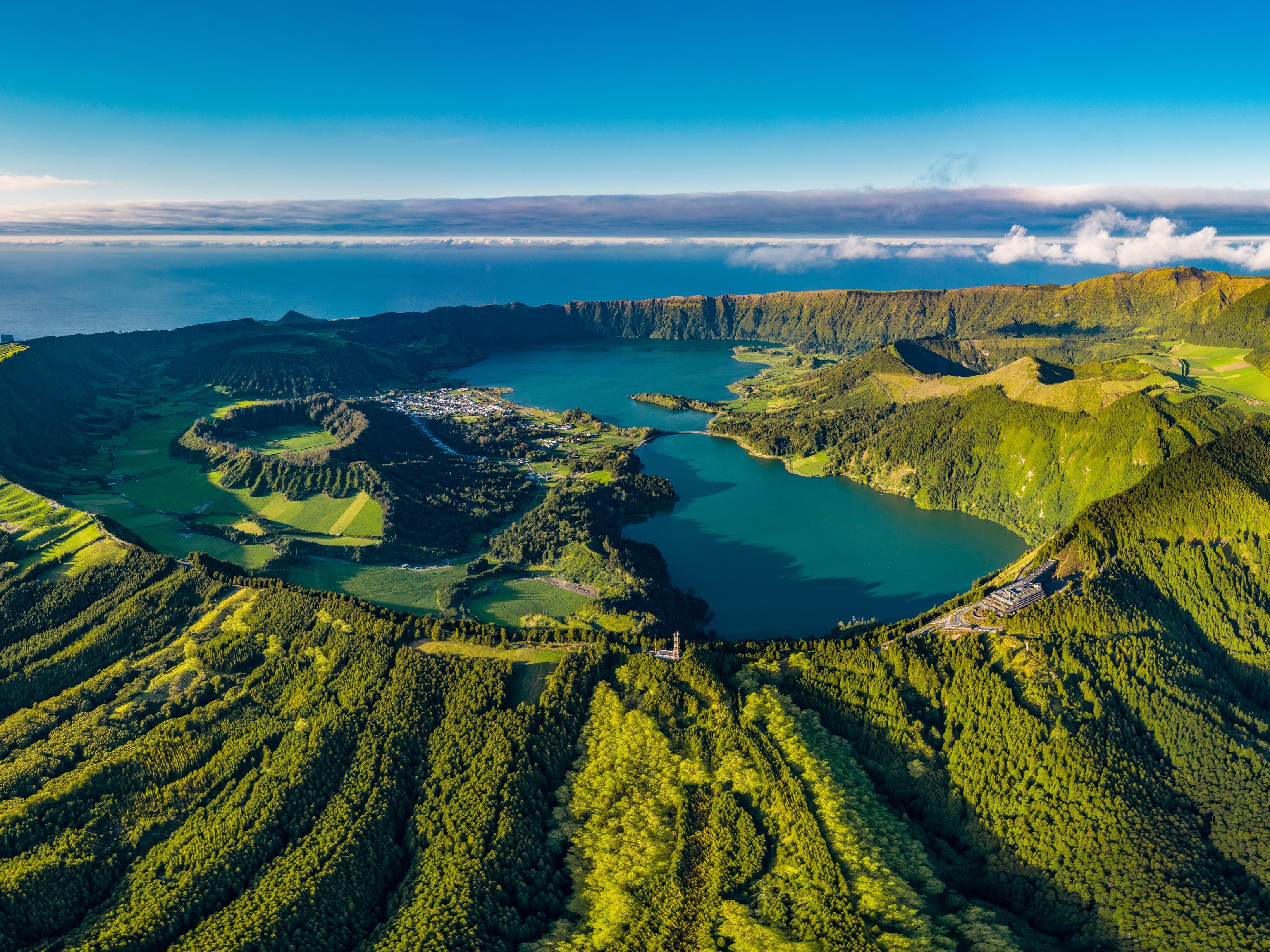
Climber Cory Richards
Summiting Pakistan's Gasherbrum II in winter was only half of the goal. Documenting an adventure story for the ages completed it.
See Photos
After becoming the first American to successfully summit an 8,000-meter peak in winter, climber-photographer Cory Richards and his partners, veteran winter climbers Simone Moro of Italy and Denis Urubko of Kazakhstan, were hit by a massive wall of snow and ice churning down the flanks of Gasherbrum II in Pakistan. “Once the avalanche took us, there was no more fear,” says Richards, who documented the whole experience. “You’re dying. You are trying to swim in the snow, stay on top. All of a sudden we stopped and my face was on the surface.”
Taking advantage of a two-day weather window, the three men had started up the peak with the knowledge that they would be descending in dangerous conditions. They climbed without the aid of supplemental oxygen or porters. They struggled through hurricane-force winds, minus 50ºF temperatures, and unstable snow conditions that led to the massive Class 4 avalanche. Moro was able to dig himself free and quickly helped his partners dig themselves out in a matter of minutes.
Equipped with a small HD camera, Richards turned the camera on himself as he broke down, weeping with terror and relief. The raw, unfiltered images offer a rare glimpse into the perilous mental journeys that high-altitude climbers face.
The footage became the backbone of Cold, a film that provides both a glimpse into one of the most inhospitable environments on the planet and an honest reflection on the risks of climbing the world’s biggest peaks. “Seeing someone that scared makes it real for the viewer. I can’t actually watch the film anymore. It’s a little too much,” says Richards. “I thought I was dying. It’s too harsh to put yourself through over and over again. It was very much the defining moment in my life. Period.”
—Fitz Cahall
THE INTERVIEW
Adventure: An 8,000-meter peak is a challenge in perfect conditions. In the winter, the conditions are some of the worst on the planet. What attracts you to this kind of climbing?
Cory Richards: It’s basically a slow reduction. You break down the process of mountaineering. There are only three people climbing. There is no local help. You are taking the margin for error out of it. We wanted to do it without oxygen, without porters, and in the winter. You are basically reducing climbing over and over again. When you do succeed—well, you never conquer a mountain. You are always its guest. In this case, we were its guest when it was in a bad mood.
A: It almost sounds as if the experience outweighs the summit?
CR: It’s about feeling like you are being held by something bigger. Climbing on that level is akin to love. It’s totally outside what we can describe with words, and it does make you feel small. Why you are doing it? Your guess is as good as mine.
A: Cold, the film that came out of your Gasherbrum II ascent, has been wowing film festival audiences. It’s one thing to climb a mountain in minus 50ºF temps, it’s another to find the energy to film it. How did you go about filming in those conditions?
CR: Minimalism is the only option. I didn’t have a backpack; everything had to go inside of my down suit, including water, food. I took one camera body and one lens. It was a Canon 5D Mark II and a 24-105mm lens and eight extra batteries. That was the maximum allotment I could allow myself. My camera actually died on the way down, it became so packed with ice.
Again, it’s a reduction. It’s the same approach as we took to the climb. You reduce it to the point where you aren’t taking superfluous gear that may hinder the process of climbing. It’s a soulful approach. It’s simplicity. It’s what makes the climb beautiful and the media beautiful.
A: You’ve been quick to deflect your achievement of being the first American to summit an 8,000-meter peak in winter. Why doesn’t that matter to you?
CR: A lot of times people get wrapped up in one facet, the "first American" thing. Simone asked me to go. I thought it would be fun. I wanted to go try something that nobody had done. Before going, I didn’t know that there was 26 years of history of people trying. I didn’t know about the American thing. I didn’t put effort or energy into being the first American to do something.
- National Geographic Expeditions
A: You, Simone, and Denis almost lost your lives on this trip when you were hit by an avalanche during the descent. All three of you were partially buried, but survived without major injuries. Do moments like that put the "first American" hype into perspective?
CR: Simone and Denis, as clichéd as it sounds, they went from being my climbing partners to being family. The avalanche cemented that. They are my family. They are my brothers. Forget Italian, Kazak, American. None of that matters. What matters is that we did it together.
You don’t get to decide when and where nature is going to come down on top of you. Climbing GII was such a huge process, such a massive emotional and psychological experiment. When you deconstruct it to a level of utter submission you realize you've been on an adventure.
A: Would you go back?
CR: Absolutely, without question. I may not go back this next year because I just got married and I want to spend time with my wife. That’s really important to me, but I plan on going back. I’m madly in love with it. Yeah, it sucks getting beat down. It’s uncomfortable and there is some lingering stress surrounding it. There is definitely fear, but I think that’s why it is important to go back. It’s a process. There is a learning curve. If you love something you don’t just do it once. I could never not go back. It’s inside of me.







